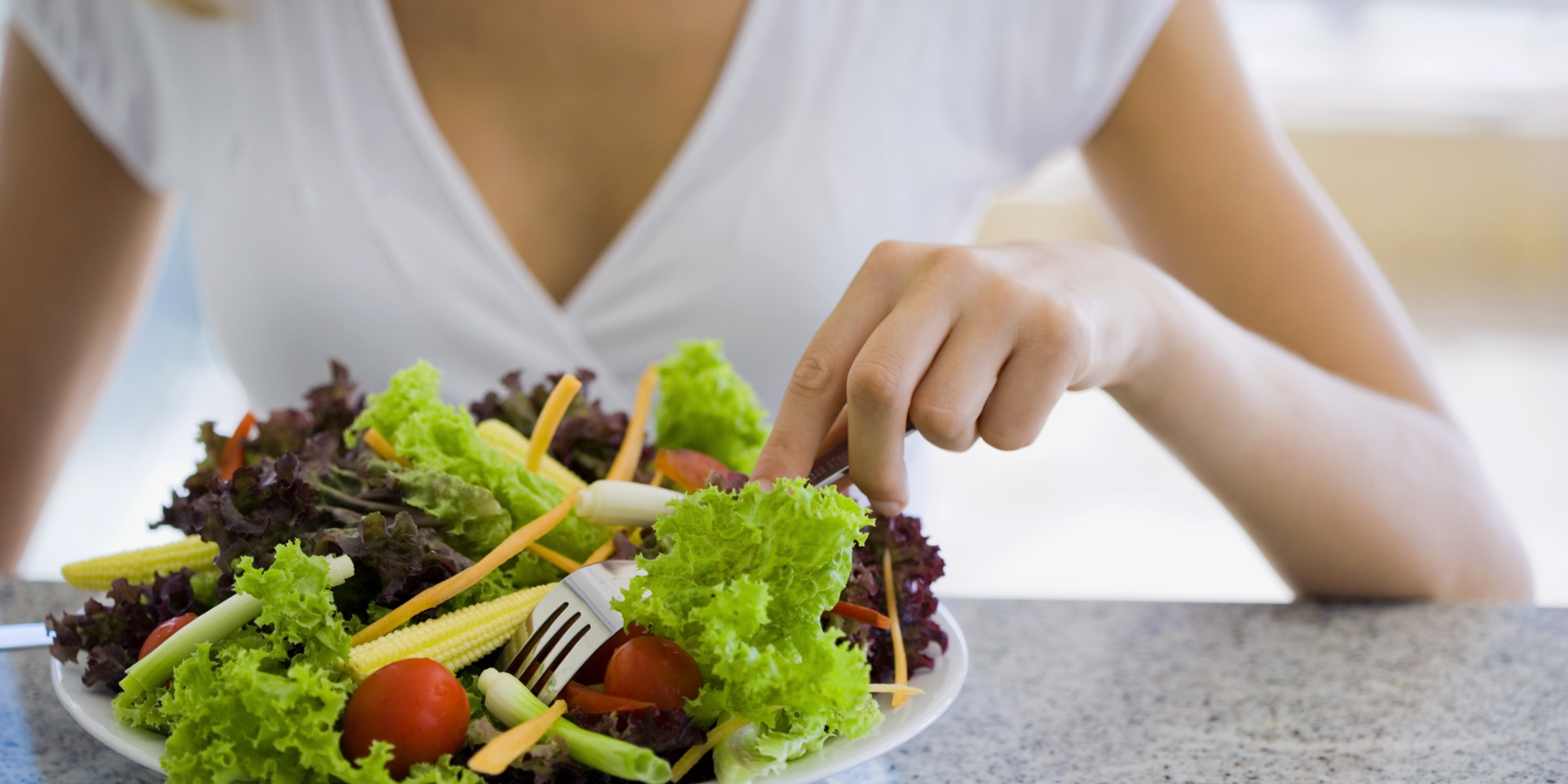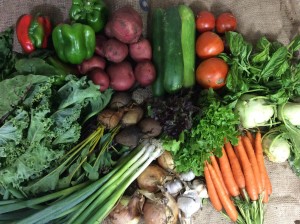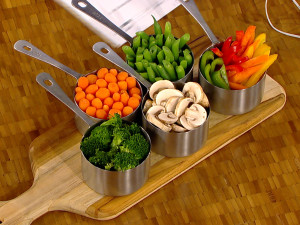Chances are you are missing out on some of the incredible health benefits of vegetables. A recent CDC study reveals that 86% of Americans are not eating enough vegetables! Do you eat the recommended 3 servings of vegetables per day? If you live in the Kansas City area Where the Redfearn Grows Natural Farms can help you develop healthier eating habits and have fun doing it! Our unique CSA program allows you to choose from our delicious home-grown produce to customize a box to fit your needs each week. We grow an amazing selection of vitamin-packed produce on our farm in Independence, MO; and we grow them the old fashioned way all without the use of harmful chemical pesticides or herbicides. Availability of items changes with the seasons, but the freshness and quality of what we offer remains the same. Our CSA members will tell you that, joining our CSA program has radically improved their diet. In fact that’s our motto: “Together we’ll change the way you eat!”
Each week, we provide recipes and tips to help unlock the hidden flavors and nutrition from the crops we grow. The freshness of the real food we provide has made vegetable lovers out of many sworn vegetable haters. One member told us she hated carrots for the first 60 years of her life until she tasted ours. Now she chooses them almost every week!
So what are you waiting for? We have customizable membership levels that will fit your needs and budget. Check out our CSA options here.
So you know vegetables are good for you and we grow just about anything you can think of, but besides the green beans, tomatoes, peppers, artisan salad mixes, onions, new potatoes, fennel, herbs, etc, etc….Here are the top 10 crops we grow when it comes to exceptional health benefits. In parenthesis you will see at what times in the season they are available.
1. Spinach (Spring and Fall and Winter)
This leafy green tops the chart as one of the healthiest vegetables, thanks to its impressive nutrient profile. We would love to grow it all year but it just can’t take the Missouri summer heat.
One cup (30 grams) of raw spinach provides 56% of your daily vitamin A needs plus your entire daily vitamin K requirement — all for just 7 calories.
Spinach also boasts a great deal of antioxidants, which can help reduce the risk of chronic disease.
One study found that dark green leafy vegetables like spinach are high in beta-carotene and lutein, two types of antioxidants that have been associated with a decreased risk of cancer.
In addition, a 2015 study found that spinach consumption may be beneficial for heart health, as it may lower blood pressure.
2. Carrots (All Season)
The carrots we grow are packed with vitamin A, providing 428% of the daily recommended value in just one cup (128 grams).
They contain beta-carotene, an antioxidant that gives carrots their vibrant orange color and could help in cancer prevention.
In fact, one study revealed that for each serving of carrots per week, participants’ risk of prostate cancer decreased by 5%.
Another study showed that eating carrots may reduce the risk of lung cancer in smokers as well. Compared to those who ate carrots at least once a week, smokers who did not eat carrots had a three times greater risk of developing lung cancer.
Our carrots are consistently a big crowd pleaser. Kids and adults love the sweet crunch of our fresh-dug carrots.
3. Broccoli (Spring and Fall)
We grow big heads and mini broccolini. Broccoli belongs to the cruciferous family of vegetables along with Chinese cabbage, turnips, and radishes that we also grow.
It is rich in a sulfur-containing plant compound known as glucosinolate, as well as sulforaphane, a by-product of glucosinolate.
Sulforaphane is significant in that it has been shown to have a protective effect against cancer.
In one animal study, sulforaphane was able to reduce the size and number of breast cancer cells while also blocking tumor growth in mice.
Eating broccoli may help prevent other types of chronic disease, too.
In addition to its ability to prevent disease, broccoli is also loaded with nutrients.
A cup (91 grams) of raw broccoli provides 116% of your daily vitamin K needs, 135% of the daily vitamin C requirement and a good amount of folate, manganese and potassium.
4. Garlic (Summer and Fall)
Garlic has a long history of use as a medicinal plant, with roots tracing all the way back to ancient China and Egypt. We love growing it and once pulled in early summer, it’s available until we sell out sometime in fall. Oh, don’t forget we also have garlic scapes early in spring.
The main active compound in garlic is allicin, a plant compound that is largely responsible for garlic’s variety of health benefits.
Several studies have shown that garlic can regulate blood sugar as well as promote heart health.
In one animal study, diabetic rats were given either garlic oil which caused a decrease in blood sugar and improved insulin sensitivity.
Another study fed garlic to participants both with and without heart disease. Results showed that garlic was able to decrease total blood cholesterol, triglycerides and LDL cholesterol while increasing HDL cholesterol in both groups.
Garlic may be useful in the prevention of cancer as well. One test-tube study demonstrated that allicin induced cell death in human liver cancer cells.
5. Kale (All Season)
We offer Kale 12 months out of the year. We’re growing four different types this year for increased variety and fun. Like other leafy greens, kale is well-known for its health-promoting qualities, including its nutrient density and antioxidant content.
A cup (67 grams) of raw kale contains plenty of B vitamins, potassium, calcium and copper.
It also fulfills your entire daily requirement for vitamins A, C and K.
Due to its high amount of antioxidants, kale may also be beneficial in promoting heart health.
In a 2008 study, 32 men with high cholesterol drank 150 ml of kale juice daily for 12 weeks. By the end of the study, HDL cholesterol increased by 27%, LDL cholesterol decreased by 10% and antioxidant activity was increased.
Another study showed that drinking kale juice can decrease blood pressure and may be beneficial in reducing both blood cholesterol and blood sugar.
6. Sugar Snap Peas (Spring and Fall)
Nobody turns down these incredible snacks! Oh so super sweet and crunchy! We just wish they were easier to pick:) Peas are considered a starchy vegetable. This means they have a higher amount of carbs and calories than non-starchy vegetables and may impact blood sugar levels when eaten in large amounts.
Nevertheless, green peas are incredibly nutritious.
One cup (160 grams) of cooked green peas contains 9 grams of fiber, 9 grams of protein and vitamins A, C and K, riboflavin, thiamin, niacin and folate.
Because they are high in fiber, peas support digestive health by enhancing the beneficial bacteria in your gut and promoting regular bowel movements.
Moreover, peas are rich in saponins, a group of plant compounds known for their anti-cancer effects.
Research shows that saponins may help fight cancer by reducing tumor growth and inducing cell death in cancer cells.
7. Swiss Chard (All Season)
We grow a wide array of multicolored chard. It’s beautiful and available all season. Swiss chard is low in calories but high in many essential vitamins and minerals.
One cup (36 grams) contains just 7 calories yet 1 gram of fiber, 1 gram of protein and lots of vitamins A, C and K, manganese and magnesium.
Swiss chard is especially known for its potential to prevent damage caused by diabetes mellitus.
In one animal study, chard extract was found to reverse the effects of diabetes by decreasing blood sugar levels and preventing cell damage from disease-causing free radicals.
Other animal studies have shown that the antioxidant content of chard extract can protect the liver and kidneys from the negative effects of diabetes
8. Ginger (Late Summer and Fall)
Ginger is a tropical plant but we’ve managed to grow it in Missouri! The ginger we grow is so much fresher than anything you’ve seen in the store. You’ll have to see it to believe it. Ginger root is used as a spice in everything from vegetable dishes to desserts.
Historically, ginger has also been used as a natural remedy for motion sickness.
Several studies have confirmed the beneficial effects of ginger on nausea. In a review comprised of 12 studies and nearly 1,300 pregnant women, ginger significantly reduced nausea compared to a placebo.
Ginger also contains potent anti-inflammatory properties, which can be helpful in treating inflammation-related disorders like arthritis, lupus or gout.
In one study, participants with osteoarthritis who were treated with a concentrated ginger extract experienced reduced knee pain and relief from other symptoms.
Further research suggests that ginger could aid in the treatment of diabetes as well.
A 2015 study looked at the effects of ginger supplements on diabetes. After 12 weeks, ginger was found to be effective in decreasing blood sugar levels.
9. Sweet Potatoes (Fall)
We took a year off growing these last year but they are back this year by popular demand.
Classified as a root vegetable, sweet potatoes stand out for their vibrant orange color, sweet taste and impressive health benefits.
One medium sweet potato contains 4 grams of fiber, 2 grams of protein and a good amount of vitamin C, vitamin B6, potassium and manganese.
It’s also high in a form of vitamin A called beta-carotene. In fact, one sweet potato fulfills 438% of your daily vitamin A needs.
Beta-carotene consumption has been linked to a significant decrease in the risk of certain types of cancer, including lung and breast cancer.
10. Kohlrabi (Spring and Fall)
OK, this one is one you have to grow to love. Most folks have never even seen one before but they really are delicious and as you can see, incredibly nutritious. Also known as the turnip cabbage or German turnip, kohlrabi is a vegetable related to the cabbage that can be eaten raw or cooked.
Raw kohlrabi is high in fiber, providing 5 grams in each cup (135 grams). It’s also full of vitamin C, providing 140% of the daily value per cup.
Studies have shown that the antioxidant content of kohlrabi makes it a powerful tool against inflammation and diabetes.
In one animal study, kohlrabi extract was able to decrease blood sugar levels by 64% within just seven days of treatment.
The Bottom Line
From providing essential vitamins and minerals to fighting disease, it’s clear that including vegetables in your diet is crucial for good health.
Joining Where the Redfearn Grows Natural Farms CSA program is a great way to ensure that you’re getting a good mix of vegetables in your diet to take advantage of their many diverse health benefits and get the most nutritional bang for your buck.
We are accepting new members now. Don’t delay! The season starts soon and space is limited! We’d love to be your farmers so that together we can change the way you eat!
Questions about joining our CSA? Call us – 816-457-1223 or email us at sheri@redfearnfarm.com.



